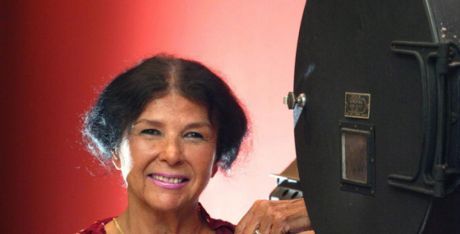Arts
You are here
Alanis Obomsawin: filming Indigenous strengths

February 14, 2018
Clad completely in red to show support for “missing and murdered Indigenous women, girls, boys and disabled”, the legendary documentary filmmaker Alanis Obomsawin addressed a Toronto audience earlier this year. The 85-year old from the Abenaki First Nation has spent nearly the last 50 years commemorating Indigenous strengths and struggles through 50 documentaries for the National Film Board.
She may be best known for “Kanehsatake: 270 Years of Resistance”, the outstanding film about the so-called “Oka” crisis of 1990, when the First Nation successfully resisted efforts by the town and developer to expand a golf course on the nation’s territory, facing brutal suppression by police and military forces.
But years before, in 1984, she made “Incident at Restigouche” after police raided a Mi’kmaq reserve in 1981 to restrict fishing by the Lisutguj First Nation. Using an interview format, she verbally pummels the Quebec Minister of Fisheries, Lucien Lessard (who had ordered the raids) when he tries to belittle First Nations’ achievements. The NFB at the time had warned her to only interview Indigenous people, “not whites”, but in the end agreed to distribute her film.
Stories and technique
She was driven to tell these stories because of what she experienced in school in Trois- Rivieres, where she was the only Indigenous person. She was outraged by the telling of history, “designed to teach kids how to hate Indigenous people. Children need to hear a different story.” But the turning point came in the early 1960s when her community needed to build its own swimming pool because the children were not welcome at the neighbourhood pool.
She always wanted to literally give voice to Indigenous peoples because they were silent in most films. She said, “Before I make a film when I go into a community I just listen to the people, without a crew at first. Then I record and once there is trust then I film…It is the people I film who are in charge. The people tell me what they want and I film them.”
She commended the NFB for teaching her the technical part of filmmaking and supporting her strongly independent approach.
Many stories of resistance
As Obomsawin explains, “Strength comes from people who say no… If everyone stands together they can stop it. It has to do with recognizing the land and water and the world we all live in.”
Obomsawin said she is optimistic about the future, not because of politicians but because “in the last ten years, Canadians have shown they now want to know the history and they want justice, even though some still look down on us… It is good to tell our stories that we hid for so long because they were horrifying…Today this room is full but ten years ago there would have been only 10 or so people.”
Her latest film, “Our People will be healed” premiered at the 2017 Toronto International Film Festival, to critical acclaim. The film depicts Cree children in Norway House (in northern Manitoba) whose lives are enriched by a school that emphasizes their language, culture and traditions. A full list of her films can be found at www.nfb.ca/directors/alanis-obomsawin.
Section:










